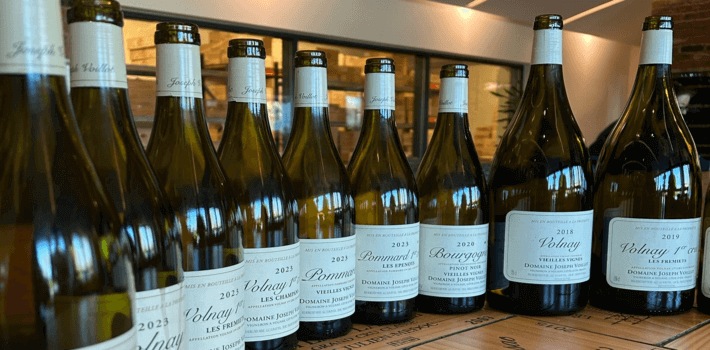After twelve years in the wine trade, I’ve read countless tasting notes. Yet one aspect I’ve often overlooked is soil. I’ve skimmed the descriptions, acknowledged the references, but never truly connected the dots between soil types and the way a wine actually tastes.
We often hear the French word terroir. It’s a term that captures the combined influence of environmental factors on wine - soil, climate, and topography. Put simply, terroir is what makes wines from one place taste distinct from those of another.
Winemaking itself can be divided into two parts: viticulture and vinification.
-
Viticulture covers everything in the vineyard - the growing and harvesting of grapes. This is where terroir plays its role.
-
Vinification is what happens after harvest, in the winery.
Few regions embody the importance of soil quite like Burgundy in eastern France. Recently, I had the pleasure of attending a guided tasting with Etienne Chaix of Domaine Joseph Voillot in Volnay. The focus? His 2023 Pinot Noirs.
What made this tasting so fascinating was that everything was constant - the region, the winemaker, the vintage, even the winemaking approach. The key difference between the wines was soil. Halfway through the line-up, it finally clicked for me just how transformative soil types can be on flavour and style.
Meeting Domaine Joseph Voillot
Domaine Joseph Voillot is a family estate in Volnay, a village celebrated for producing refined, elegant Pinot Noirs. The domaine holds vineyards in some of Volnay’s finest crus (Les Champans, Les Caillerets, and Les Fremiets) along with parcels in neighbouring Pommard to the north and Meursault to the south.
Despite the estate’s reputation, what struck me most about Etienne was his modesty. He attributed the character of the wines not to flashy techniques, but to terroir and attentive vineyard care. The domaine follows a minimal-intervention philosophy: organic practices, low yields for concentrated fruit, and hand harvesting to ensure only the best grapes make it to the winery.
A Tale of Two Soils
The tasting highlighted two main soil types:
-
Soft limestone (common in Meursault, home to much Chardonnay) produces fresher, more mineral-driven wines.
-
Deeper clay soils (prevalent in Pommard) yield denser, more powerful Pinot Noirs.
Volnay, nestled between the two, benefits from a unique transition zone - pockets of vineyards where clay merges into limestone, creating diverse styles of Pinot Noir within a small area.
Highlights from the Tasting
-
2023 Volnay 1er Cru Les Fremiets – The most delicate wine of the line-up: soft, silky, and fragrant. Despite its proximity to Pommard, its powdery limestone soils bring brightness, freshness, and elegance.
-
2023 Volnay 1er Cru Les Champans – In contrast, this wine showed richness and power. Its clay-rich soils retain water and nutrients, producing a deeper, more opulent style of Pinot Noir.
-
2023 Bourgogne Pinot Noir Vieilles Vignes – Made from old vines just outside Volnay, this wine is vibrant and youthful, with limestone-driven freshness. A brilliant expression of Burgundy and outstanding value.
-
2023 Volnay Vieilles Vignes – From six plots near Les Champans, planted on heavier clay soils. This produced a more intense, luxurious style, showing how “old vines” and clay can combine for depth and richness.
Reflections
Unlike a classic horizontal tasting (same vintage, same region, different producers), this was an even closer look: one domaine, one vintage, different soils. The exercise made it crystal clear just how much vineyard location and soil composition shape the final wine.
As many winemakers say: great wine starts in the vineyard. Or, as one expression goes: “A winemaker can’t create great wine from poor grapes.”
So, what exactly makes “good soil”? And how do all the countless soil variations around the world affect taste? That’s a much bigger question than I can answer in one sitting... but this tasting has certainly made me more curious than ever!
Rachel Hart
Regional Account Manager
 Back to blog
Back to blog


